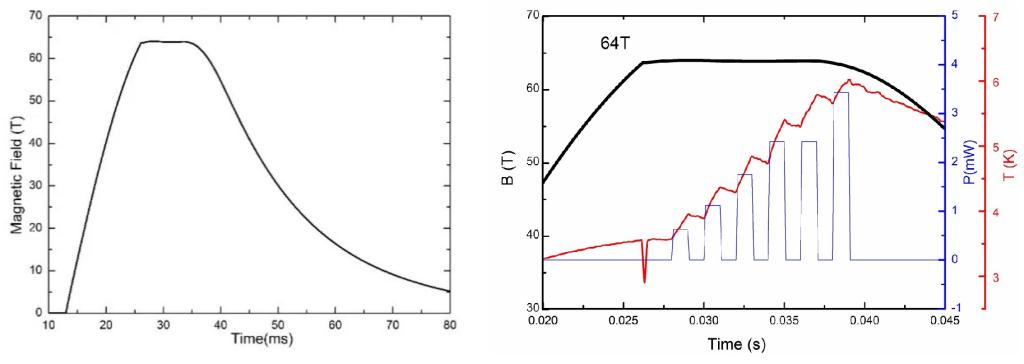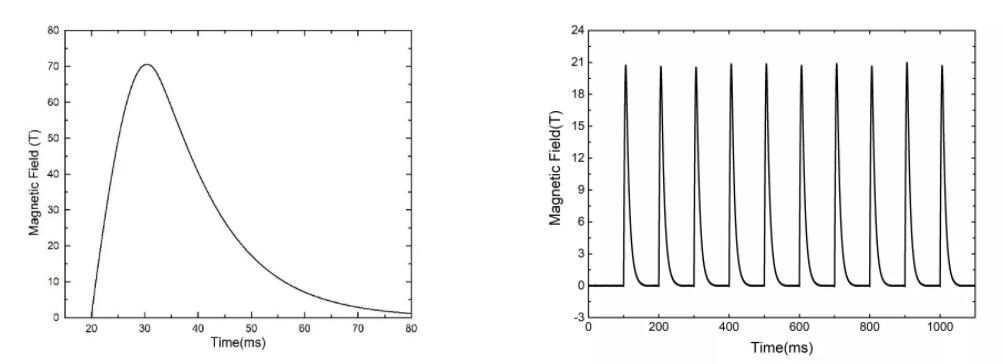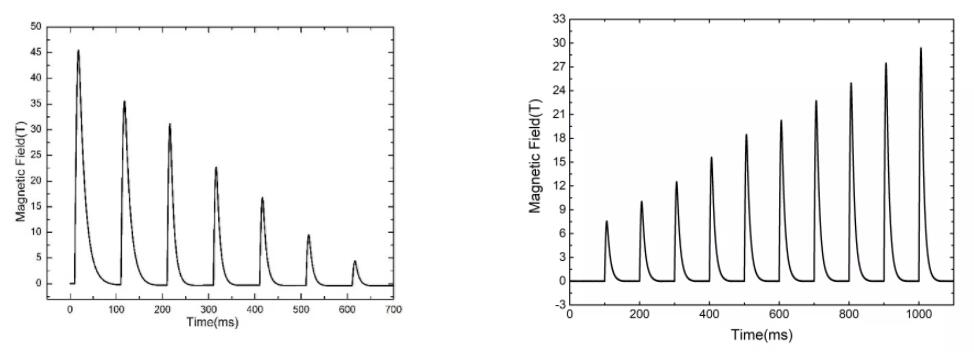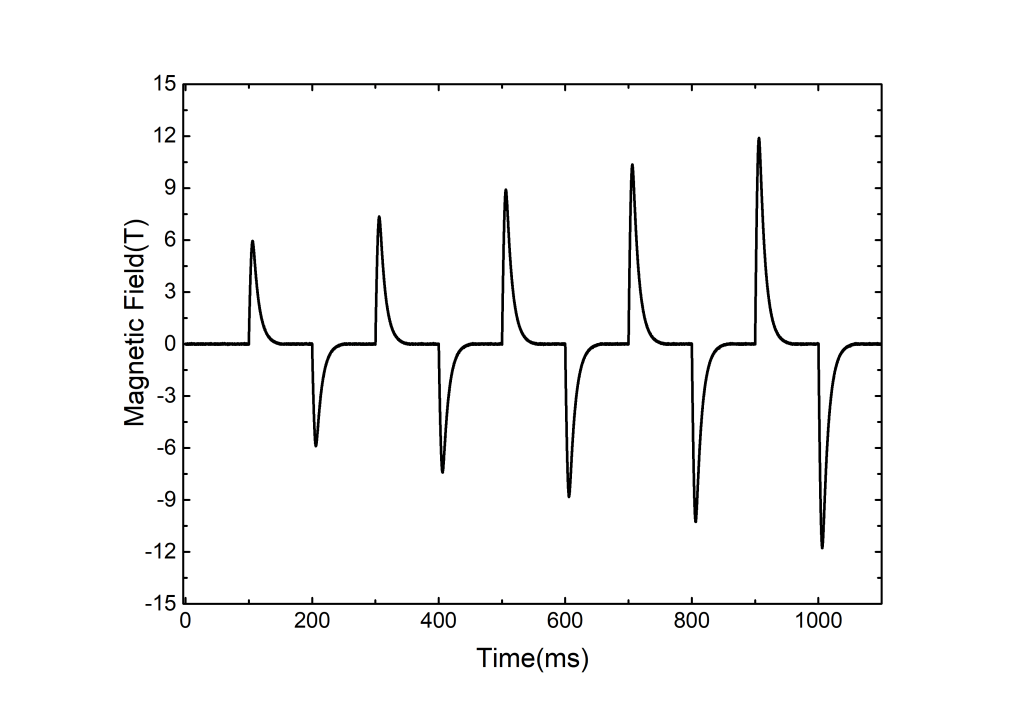Record Pulsed Magnetic Field with Flattop at the Wuhan National High Magnetic Field Center
author: time:2018-12-19 clicks:
On November 22, pulsed magnetic field up to 64 T with 10 ms flattop and variation less than 0.3% achieved at the Wuhan National High Magnetic Field Center (WHMFC) and specific heat measurements on CeRhIn5 were carried out.
The magnet system
This system is developed based on the innovative method proposed in 2014 [1]. The system consists of two discharge circuits (the magnet circuit and the auxiliary circuit) which are coupled by a pulse transformer. The electromotive force (EMF) induced via the transformer in the magnet circuit containing the magnet coil is opposed to the EMF of the capacitor bank. At a certain point before the current pulse in the coil reaches its peak, the auxiliary circuit is triggered. With optimized parameters for charging voltage and trigger delay, the current in the magnet circuit can be approximately kept constant to obtain a flat-top. The magnet is a typical 65 T user coil wound from 12 layers of CuNb wire with bore size of 21 mm. The magnet circuit is energized by ten 1 MJ (3.2 mF / 25 kV) capacitor modules and the auxiliary circuit by two 1 MJ modules. For 64 T pulse, the voltage was only 20 kV and 9 kV for the magnet circuit and the auxiliary circuit, respectively. The total energy was less than 7 MJ.

a ) 64 T magnetic field with flattop b) Specific heat measurement of CeRhIn5
The same magnet can do more
By adjusting the charging voltage and the triggering time of the thyristor switches of the capacitor banks, a series of different field waveforms were produced with the same magnet at the same measurement station. Benefited from the fast cooling design, 10 to 20 pulses with different peak fields from 20 to 45 T can be produced in one seconds at the repeat rate as high as 50 Hz. This pulse string can be repeated in every 30 minutes.
The diversification of the field waveforms and the repeated rate produced with one magnet in one measurement station enhances the capability and efficiency of the pulsed magnetic field facility, as well as the possibility of research in pulsed magnetic field.

c) Typical field waveform driven by capacitor bank d) Repeated pulses with same peak field

e) Repeated descending pulses f) Repeated incremental pulses

g) Repeated pulses with alternating polarities
